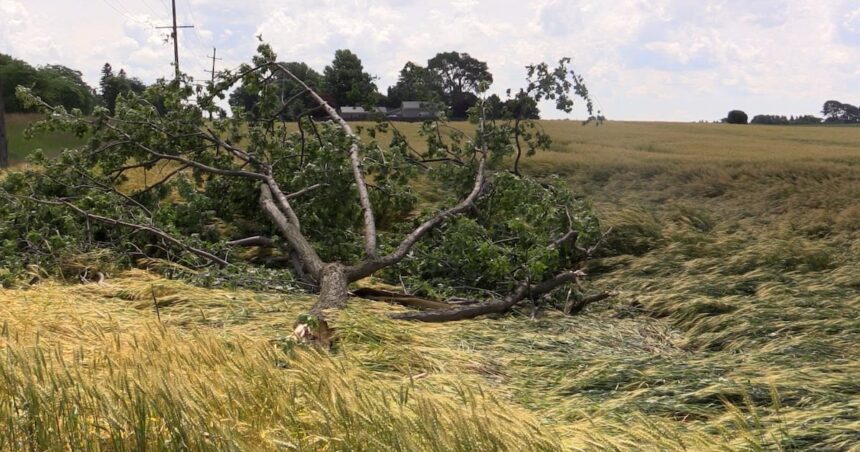The violent rotation of dark clouds that descended upon rural landscapes north of London, Ontario on Canada Day has been officially classified as a tornado, according to researchers who have meticulously traced its destructive path through farmland near Lucan.
“We’ve documented a very clear path of damage extending several kilometers,” explained Dr. Eleanor Michaels, lead meteorologist with the Northern Tornadoes Project at Western University. “The rotation signature was unmistakable, with debris scattered in a counter-clockwise pattern consistent with tornadic activity.”
The Canada Day tornado touched down at approximately 3:45 p.m., catching holiday celebrants off guard as dark skies rapidly intensified into dangerous weather conditions. Environment Canada’s weather radar had detected rotation in the thunderstorm cell, prompting tornado warnings for Middlesex County just minutes before touchdown.
Local resident James Thornhill described the approaching storm as “unlike anything I’ve witnessed in my 62 years in this region.”
“The sky turned this eerie green-yellow color, then everything went still for maybe 30 seconds before the roaring started,” Thornhill told CO24 News. “My neighbor’s equipment shed is completely gone—vanished except for the concrete pad.”
Preliminary assessments classify the tornado as an EF-1 on the Enhanced Fujita scale, with estimated wind speeds between 135-175 kilometers per hour. While no serious injuries have been reported, property damage has been substantial across a narrow corridor stretching northeast from Lucan toward Elginfield.
The tornado’s timing coincided with Canada’s national holiday celebrations, forcing the cancellation of several outdoor events throughout Middlesex County. Meteorologists with Environment Canada note that the atmospheric conditions resembled those typically seen in late August rather than early July.
“We observed an unusual combination of high humidity, atmospheric instability, and wind shear for this time of year,” noted Dr. Michaels. “Climate data suggests these conditions are appearing with greater frequency across Southwestern Ontario, raising important questions about changing weather patterns.”
Power outages affected nearly 2,200 homes in the region, with Hydro One crews working through the holiday evening to restore service. As of early Tuesday morning, approximately 140 properties remained without electricity.
The tornado marks the fourth confirmed tornadic event in Southwestern Ontario this season, a statistic that climate researchers are monitoring closely. Historical data from the region shows an average of seven tornadoes annually across this section of Ontario’s tornado alley, though recent years have seen numbers trending slightly higher.
Provincial disaster recovery officials are expected to visit affected properties this week to assess damage and determine eligibility for emergency assistance programs. Meanwhile, volunteer groups from surrounding communities have already mobilized to help with cleanup efforts.
As Canadians reflect on this dramatic start to summer, perhaps we should ask ourselves: Is our understanding of “normal” weather patterns keeping pace with the changing realities we’re experiencing, and are we adequately prepared for nature’s increasingly unpredictable displays of force?










